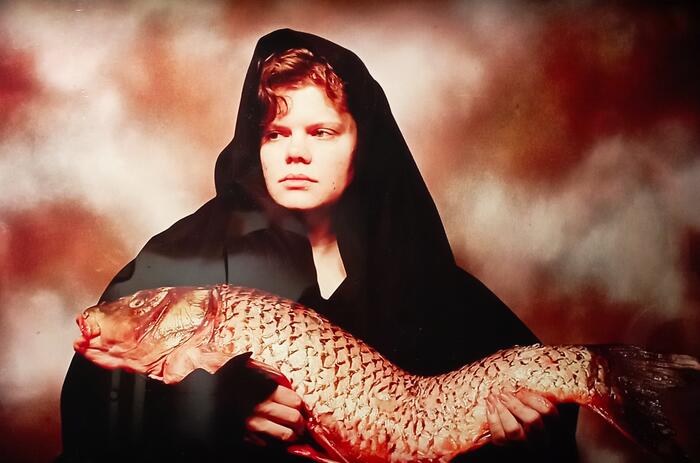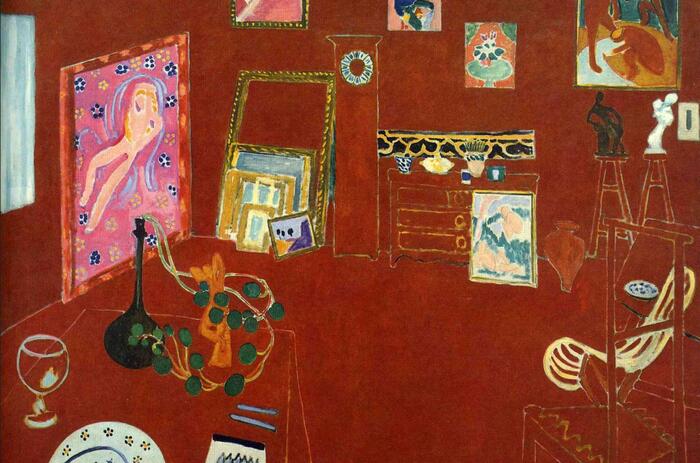FORMES ET COULEURS 1949-2015: ELLSWORTH KELLY AT FONDATION LOUIS VUITTON, PARIS
On the occasion of the 100th anniversary of Ellsworth Kelly's birth, the Fondation Louis Vuitton pays tribute to the artist with the exhibition “Ellsworth Kelly Formes et Couleurs, 1949-2015”; the first exhibition in France to address in such a broad way the work of this essential creator of the second half of the 20th century, both for its chronology and for the techniques it brings together. Organized with the Glenstone Museum (Potomac, Maryland) and in collaboration with the Ellsworth Kelly Studio, it brings together more than a hundred works, covering a wide range of media used by the artist, from painting to sculpture, works on paper, collage and photography presented on the main and first floors of the Foundation.

Considered one of the most important American abstract painters and sculptors, his career is marked by the independence of his art in relation to any school or artistic movement and by his innovative contribution to 20th century painting and sculpture. Ten years after his death, his works continue to exert the same fascination, far beyond the usual boundaries of painting. The Fondation Louis Vuitton is fortunate to witness this every day as its Auditorium houses the last commission made by the artist during his lifetime. Designed in dialogue with the volumes of Frank Gehry's architecture, it is made up of the “Spectrum VIII” stage curtain and a series of red, yellow, blue, green and purple monochromes that, placed like musical notes on the walls of the hall, are an excellent introduction to the exhibition.
A keen observer of reality and passionate about nature, Ellsworth Kelly invites us to immerse ourselves in color. The exhibition traces the artist's exploration of the relationship between form, color, line and space through essential works from transitional periods of his career. The diversity of the works, presented over two floors of the building and nearly 1,500 m2, requires us to escape the deceptive simplicity of Ellsworth Kelly's vocabulary and appreciate an oeuvre of surprising vitality and richness. Often monochromatic, seemingly strict in their lines, his works do not emerge from a system or the application of a rule; they result from a visual search where shapes and colors match hedonism.
Among the key works in the exhibition are early paintings such as “Green Table” (collection of the Art Institute of Chicago), the first monochrome produced after Ellsworth Kelly's visit to Giverny. In 1952 Kelly discovered Monet's masterpieces and the effect was immediate; the young artist was struck by the power of these disproportionate canvases. A lover of nature, he tried to capture the essence of the landscape by creating “Green Table”, the crucial work of the exhibition; a horizontal painting on wood entirely in emerald green, dotted with some darker or lighter shadows and lights. Although no natural element formally appears there, the imaginative visitor can perceive the sensation of the vegetal world: a carpet of grass... Another essential work on display is “Painting in Three Panels” (1956, Glenstone Museum collection), a representative example of the painter's commitment to architecture; these early works are exhibited with the now canonical “Chatham” and “Spectrum” series. Also of note is a selection of plant drawings made throughout his career, as well as a selection of rarely exhibited photographs and collages. Among the highlights of the show is “Yellow Curve” (1990), the pioneering work in Ellsworth Kelly's series of large-scale floor paintings, displayed in a custom-designed space. The installation, which spans 60 m2, is the first presentation of “Yellow Curve” in Europe since its creation in 1990 for an exhibition at Portikus, Frankfurt.
Continuing the search for his Impressionist ancestor, Ellsworth Kelly created his first monochrome, unaware that this genre would make him internationally famous. Over the next seven decades, the painter distinguished himself by his refined compositions containing assemblages of geometric shapes and flat areas of plain colors that deliberately altered the orthogonal frame of the painting and marked the history of pictorial abstraction. It was in Paris, between 1948-1954, where he discovered the direction of his art, an abstract simplification of the painting and a volumetric interpretation of painting. A painting that only acquires its full dimension through the space that surrounds it, no longer exists as an object but as a motif on the wall. Kelly exploits the canvas as an architectural element, as if it has weight and thus creates a set of links and relationships between shapes and colors that constitute a new hidden visual balance.
Kelly's artistic vocabulary is based on two fundamental elements developed during his stay in Paris: form and color. The artist sections his canvas using polygonal shapes and pure lines, drawing mosaics of squares, rectangles segmented into strips or thin lines where the colors applied homogeneously are often intense and their combinations contrasting. He experiments also with other assemblies: joins several panels to create optical effects or reliefs. In the same way, traditional frames easily give way to circles or triangles, straight lines are transformed into curves and their angles are widened or rounded; overcoming the limitations imposed by the traditional painting frame, his “object-paintings” go beyond the formal frame. “Red White" (1962) and “Black Panel with White Curve” (1989) illustrate the developed sense of geometry and proportion that characterizes his compositions.
An exceptional colorist, Kelly's palette differs from the darker chromatic ranges that dominated American painting in the late 1940s and early 1950s as in “Spectrum I” through which he explores the complex question of the harmonizing effect within the color spectrum. Using color and form to stimulate the senses and provoke emotional reactions, Kelly enriches his carefully calibrated abstractions by introducing resonances with the play of shapes, colors and lights that populate our daily lives.
If in the mid-twentieth century the American art world only bet on abstract expressionism, Kelly's work is far from the pictorial explosions of his compatriots Pollock or De Kooning. Kelly meticulously prepares his compositions before their creation, preferring the attentive observation of the reality around him; he sought to explore the links between shapes, colors, space and line and once the work is finished, its relationship with the space of the wall or eventually the floor. An aesthetic from which he would not depart throughout his career. Falsely simplistic, his paintings hide in reality a great mastery of gesture and line; and as minimalist as his abstractions are, they catch the spectator, captivating and subtly shake him, causing a state of emotion and contemplation to open new possibilities and glimpse new senses. To see what was impossible to see: reality in its maximum abstraction beyond the plane.







